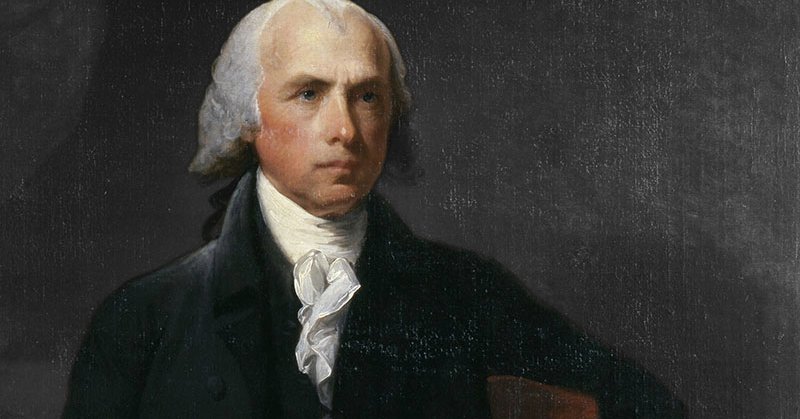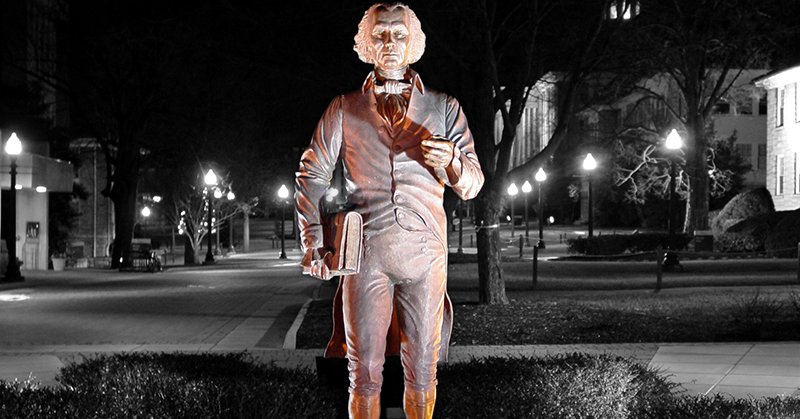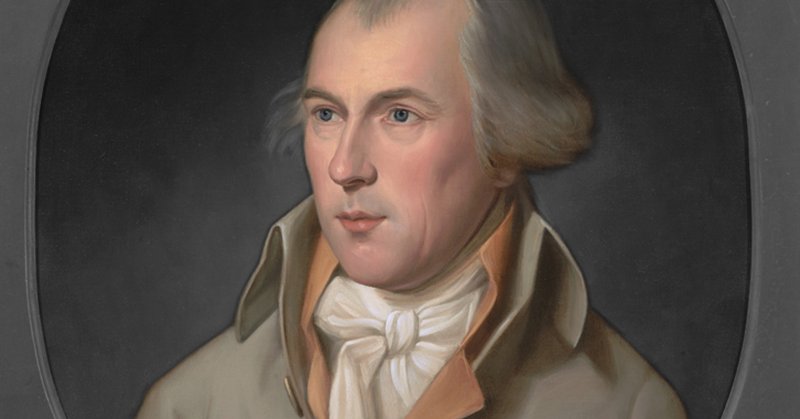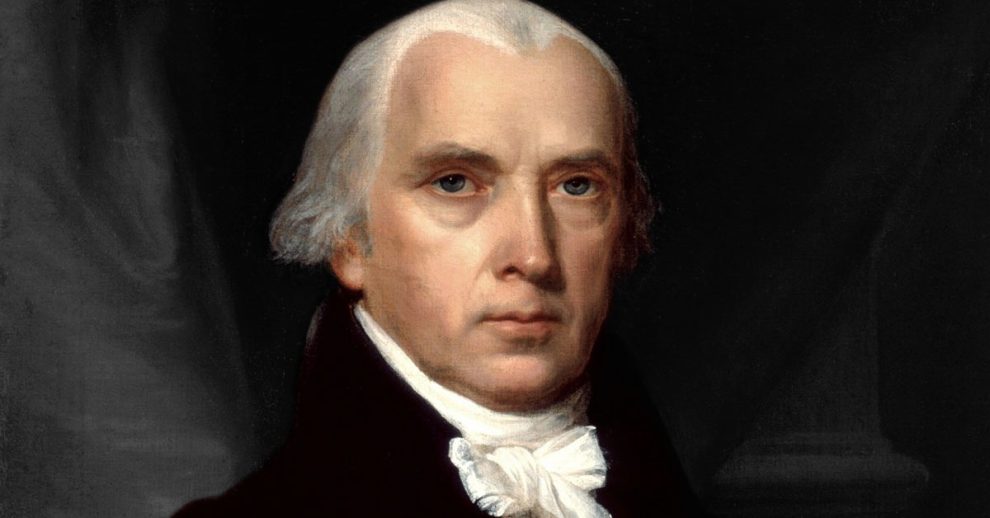James Madison wasn’t a towering figure—literally or figuratively—when you first looked at him. Born on March 16, 1751, in Virginia, this soft-spoken, bookish kid from Montpelier didn’t seem destined to shape a nation. But by the time the American Revolution was in full swing, Madison had already become one of the sharpest political minds around, helping craft the Constitution and selling it to a skeptical public through The Federalist Papers. Over the years, he climbed the political ladder—serving in Congress, teaming up with his buddy Thomas Jefferson as Secretary of State, and eventually landing in the White House as America’s fourth president. Even though he was physically the smallest president, his ideas about government, rights, and democracy still loom huge today.
Defending Religious Liberty, 1785

1. James Madison stopped the Virginia Assembly from establishing Christianity as the state religion in 1785. He wrote the “Memorial and Remonstrance Against Religious Assessments,” rallying public opinion against Patrick Henry’s proposal for a tax supporting Christian teachers. Thomas Jefferson’s Virginia Statute for Religious Freedom, which passed the next year, cemented their shared legacy of defending religious liberty.
2. James Madison wrote George Washington’s first inaugural address in 1789. He then drafted Congress’s response to that speech, ensuring its tone aligned with Washington’s vision. Finally, he authored Washington’s reply to Congress, meaning Madison effectively wrote all three exchanges for the first U.S. presidential inauguration.
3. James Madison proposed the 27th Amendment in 1789 to prevent Congress from raising its own pay during a term. However, states failed to ratify it at the time, and it lingered for over 200 years. Activists revived it in the 1980s, and in 1992 it finally became law-203 years after Madison’s proposal.
4. Abraham Lincoln stood 6’4″, making him the tallest U.S. president, while James Madison was the shortest at 5’4″ and weighed under 100 pounds. Contemporary observers often remarked on his slight frame and frail health. Despite his stature, Madison earned the title “Father of the Constitution” for his political brilliance.
5. James Madison became Princeton University’s first graduate student in 1771. After completing his undergraduate degree in just two years, he stayed for an extra year to study Hebrew, ethics, and philosophy under President John Witherspoon. His advanced studies deepened his knowledge of government and theology, which later informed his political philosophy.
6. James Madison’s voice was so soft that audiences often strained to hear him. He suffered from chronic illnesses, including “bilious fever” and what he called “a constitutional liability to sudden attacks resembling epilepsy.”
7. One of the reasons America has the Electoral College is because James Madison was worried about “tyranny of the majority,” which involves a scenario in which a majority places its own interests above those of a minority group. He also argued against a pure democracy, because it would lead to a dictatorship over the minority.
8. It was also James Madison who proposed creating the U.S. Senate to protect wealthy landowners from the poor. He argued, “Landholders ought to have a share in the government… They ought to be so constituted as to protect the minority of the opulent against the majority. The senate, therefore, ought to be this body.”
9. James Madison proposed establishing a national brewery and appointing a “Secretary of Beer” to the Cabinet. He viewed beer-making as an essential part of America’s economy and culture.
10. Both Alexander Hamilton and James Madison claimed authorship of Federalist Papers 49-58 and 62-63. In 1964, statisticians used computer analysis to examine writing patterns and confirmed Madison as the true author of all 12 essays. This finding settled a long-standing historical debate.
Renting the Portuguese Navy

11. During his presidency, James Madison considered renting the Portuguese Navy instead of building a new American fleet during the War of 1812. The idea aimed to save costs and quickly bolster naval power. Ultimately, however, the U.S. expanded its own navy instead.
12. President James Madison had two vice presidents, George Clinton and Elbridge Gerry, and both died while serving under him. Clinton died in 1812, and Gerry passed away in 1814, leaving Madison without a vice president for the remainder of his presidency.
13. For framing the US Constitution, James Madison and other Founding Fathers, including Benjamin Franklin, drew inspiration from the 117-article constitution of the Iroquois Confederacy. This sophisticated system of government existed long before European contact. The law was preserved orally and written in wampum symbols that conveyed meaning.
14. Washington initially wanted to be called “His High Mightiness, the President of the United States and Protector of Their Liberties.” James Madison and the House of Representatives objected, arguing it was too monarchical. Under Madison’s influence, the simpler title “Mr. President” became the standard.
15. James Madison recorded the most extensive notes of the Constitutional Convention in 1787. He did it because he was “frustrated in his studies of other governments by the near-impossibility of determining what their founders had intended.” His notes remain the primary source for understanding the debates that shaped the United States.
16. James Madison’s original Bill of Rights included 20 proposed amendments. Congress negotiated the list down to 12, sending them to the states for ratification. Only 10 received approval, becoming the Bill of Rights we know of today.
17. In 1814, pirate Jean Lafitte rejected a British offer to aid their attack on New Orleans. Instead, he and his privateers provided critical support to General Andrew Jackson, helping secure an American victory. President Madison later rewarded Lafitte and his men with a full pardon for their crimes.
18. James Madison and his wife, Dolley, frequently served ice cream at White House dinners, making it a presidential tradition. Dolley’s specialty was oyster ice cream, a flavor popular at the time. They also introduced other unusual flavors such as Parmesan and asparagus ice cream to delighted guests.
19. Dolley Madison promised a slave woman, believed to be Sally Hemings, Thomas Jefferson’s concubine, that she could name Jefferson’s newborn son in exchange for a fine gift. She chose “James Madison Jefferson” after her husband but never really delivered the promised present.
20. George Washington asked James Madison to draft a farewell address after his first term. Madison wrote it, but Washington was persuaded by his Cabinet to run for a second term. Four years later, Alexander Hamilton helped him rewrite his “Farewell Address.”
Lost Constitution Rediscovered

21. James Madison misplaced the original U.S. Constitution parchment late in life. In 1883, officials rediscovered it folded inside a small tin box in a closet of the Eisenhower Executive Office Building (EEOB). The document now resides securely at the National Archives in Washington, D.C.
22. James Madison’s Virginia estate, Montpelier, served as the setting for his profound study of ancient and modern governments. There, he refined the ideas that became the U.S. Constitution and Bill of Rights. Today, Montpelier operates as a museum, also interpreting the lives of the enslaved people who worked on the plantation.
23. In 1813, Parisian artisan Claude Laurent crafted a crystal flute for James Madison as a presidential gift. The instrument’s silver fittings bear an inscription honoring Madison as the fourth U.S. president. Now part of the Library of Congress’s collection, the flute gained renewed fame when musician Lizzo played it publicly in 2022.
24. In June 1836, a doctor attempted to keep James Madison alive long enough to die on July 4th, like Adams, Jefferson, and Monroe. The doctor suggested using stimulants or drugs to prolong his life. Madison refused treatment, saying he preferred to go naturally, and he died on June 28, 1836.
25. During the War of 1812, British Admiral George Cockburn marched into Washington, D.C. He ate Madison’s dinner, drank his wine, and then burned the White House. After the White House was burned during the War of 1812, James Madison spent the rest of his time as president living and conducting business from the Octagon House, which he rented for about $500.














Add Comment